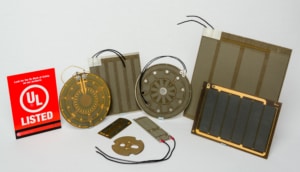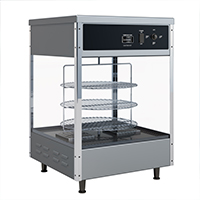Tips for Choosing a Heating Element
As technology continues to advance, the need for efficient and effective heating solutions has become increasingly important in many industries. There is now a vast array of heating elements available on the market, each with unique features and benefits. However, choosing the right heating element for a specific application can be overwhelming, and selecting the wrong one can lead to reduced efficiency, increased costs, and potential safety hazards. Therefore, it is crucial to thoroughly understand the factors that should be considered when choosing a heating element. In this blog, we will explore the critical considerations for choosing the right heating element for your application, including defining your requirements, understanding the nature of heating, calculating power and heat flux, evaluating the size and flexibility of the heating element, assessing the operating environment, installation, cost, and maintenance requirements. By considering these factors, you can choose a heating element that will provide optimal performance and reliability for your application.
Define your application requirements:  It’s essential to understand your application’s needs, including any specific performance or environmental conditions. Consider factors like the intended use of the heating element, the size of the heated area, the required temperature range, and any other specific needs. Identifying critical parameters like the type of heat sink, time to heat up, maximum temperature, recovery time, and total available power can help you choose the right heating element.
It’s essential to understand your application’s needs, including any specific performance or environmental conditions. Consider factors like the intended use of the heating element, the size of the heated area, the required temperature range, and any other specific needs. Identifying critical parameters like the type of heat sink, time to heat up, maximum temperature, recovery time, and total available power can help you choose the right heating element.
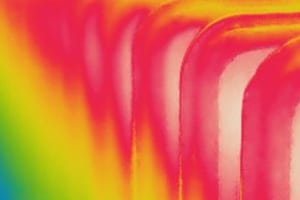 Define the nature of heating: There are three ways to transfer heat from a heating element: conduction, convection, and radiation. Conduction heaters rely on surface contact area to transfer heat, while convection heaters depend on either natural convection of air or forced convection using a fan to distribute heat. Radiation heating enables targeted heating from a distance. Radiation heaters, such as infrared heaters, can quickly reach high temperatures but may not be suitable for all applications.
Define the nature of heating: There are three ways to transfer heat from a heating element: conduction, convection, and radiation. Conduction heaters rely on surface contact area to transfer heat, while convection heaters depend on either natural convection of air or forced convection using a fan to distribute heat. Radiation heating enables targeted heating from a distance. Radiation heaters, such as infrared heaters, can quickly reach high temperatures but may not be suitable for all applications.

Calculate the Power and Heat Flux: The total power required will depend on the mass, specific heat capacity, temperature change, and time. To calculate the heat flux needed, consider the power and resistor area of the heating element. Heat flux is the amount of heat energy that passes through a unit area per unit of time.
 Size or mass of the heating element: The size or mass of the heating element can impact the heating speed and how long it takes to stabilize at a certain temperature. Lighter and thinner heating elements will heat up faster but may not hold the temperature steady as long as heavier heating elements due to their lower thermal mass. Heavier heating elements take longer to heat up but maintain the temperature more steadily over time.
Size or mass of the heating element: The size or mass of the heating element can impact the heating speed and how long it takes to stabilize at a certain temperature. Lighter and thinner heating elements will heat up faster but may not hold the temperature steady as long as heavier heating elements due to their lower thermal mass. Heavier heating elements take longer to heat up but maintain the temperature more steadily over time.
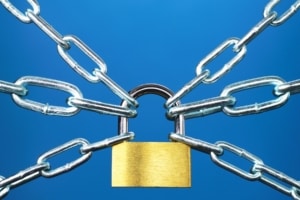 Rigid heater vs flexible heater: Some heaters, such as tubular and cast-in heaters, are non-flexible, while others, such as silicone rubber and Kapton heaters, are flexible. Consider whether a flexible heater is necessary for your application. Flexible heaters can be more easily adapted to fit specific shapes or spaces, while rigid heaters may provide more stability and precision in their heating.
Rigid heater vs flexible heater: Some heaters, such as tubular and cast-in heaters, are non-flexible, while others, such as silicone rubber and Kapton heaters, are flexible. Consider whether a flexible heater is necessary for your application. Flexible heaters can be more easily adapted to fit specific shapes or spaces, while rigid heaters may provide more stability and precision in their heating.
 Operating Environment: The operating environment can impact the performance and reliability of heaters. Consider factors like humidity, corrosive gases, and other contaminants that may affect the long-term life of the heating element. Choosing the right heating element for your operating environment is essential for optimal performance and reliability.
Operating Environment: The operating environment can impact the performance and reliability of heaters. Consider factors like humidity, corrosive gases, and other contaminants that may affect the long-term life of the heating element. Choosing the right heating element for your operating environment is essential for optimal performance and reliability.
 Heater Installation: The installation method for a heating element will depend on the type of heater. For example, aluminum foil heaters are mounted using an adhesive, while silicone rubber heaters are mounted using an adhesive or vulcanizing it to a substrate. Datec’s Mica-TF heaters are mounted by bolting them to the substrate. Consider the appropriate installation method during assembly while also considering the importance of ease of replacement in the field
Heater Installation: The installation method for a heating element will depend on the type of heater. For example, aluminum foil heaters are mounted using an adhesive, while silicone rubber heaters are mounted using an adhesive or vulcanizing it to a substrate. Datec’s Mica-TF heaters are mounted by bolting them to the substrate. Consider the appropriate installation method during assembly while also considering the importance of ease of replacement in the field
 Evaluate the cost of the heating element: The cost of a heating element can vary significantly depending on the type and quality of the element. While cheap options may seem attractive initially, they may be more expensive in the long run due to higher operating costs or shorter lifetimes or require additional components to make them work effectively (e.g., for spreading heat). On the other hand, more expensive options may provide a better performance, longer lifetimes, and reduced part counts. Therefore, consider the total cost of ownership when evaluating the cost of a heating element.
Evaluate the cost of the heating element: The cost of a heating element can vary significantly depending on the type and quality of the element. While cheap options may seem attractive initially, they may be more expensive in the long run due to higher operating costs or shorter lifetimes or require additional components to make them work effectively (e.g., for spreading heat). On the other hand, more expensive options may provide a better performance, longer lifetimes, and reduced part counts. Therefore, consider the total cost of ownership when evaluating the cost of a heating element.
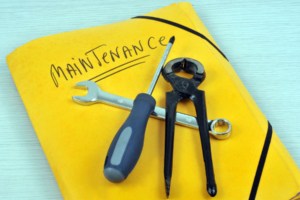 Consider Maintenance Requirements: Some heating elements require more maintenance. For example, sealed heating elements typically require less or no maintenance, while heating elements with exposed coils require regular maintenance to ensure proper functioning. Considering the ongoing maintenance requirements of a heating element is essential to keep costs down and provide reliable performance over time.
Consider Maintenance Requirements: Some heating elements require more maintenance. For example, sealed heating elements typically require less or no maintenance, while heating elements with exposed coils require regular maintenance to ensure proper functioning. Considering the ongoing maintenance requirements of a heating element is essential to keep costs down and provide reliable performance over time.
To Summarize, choosing the right heating element is critical for achieving optimal performance and reliability. By considering the above factors and working with a reputable heating element manufacturer, you can develop or select the appropriate heating solution for your application.
Datec Engineers can help if you are in the process of choosing a heater for your next project. Learn more about how we work.
If you are looking for a reliable company that provides high-quality thick film heaters, look no further than Datec. We have the experience and expertise to deliver the best possible product for your needs.
Click here to learn more about our heating technology.
Want to discuss how Datec can help you with your next project? Contact us here.




